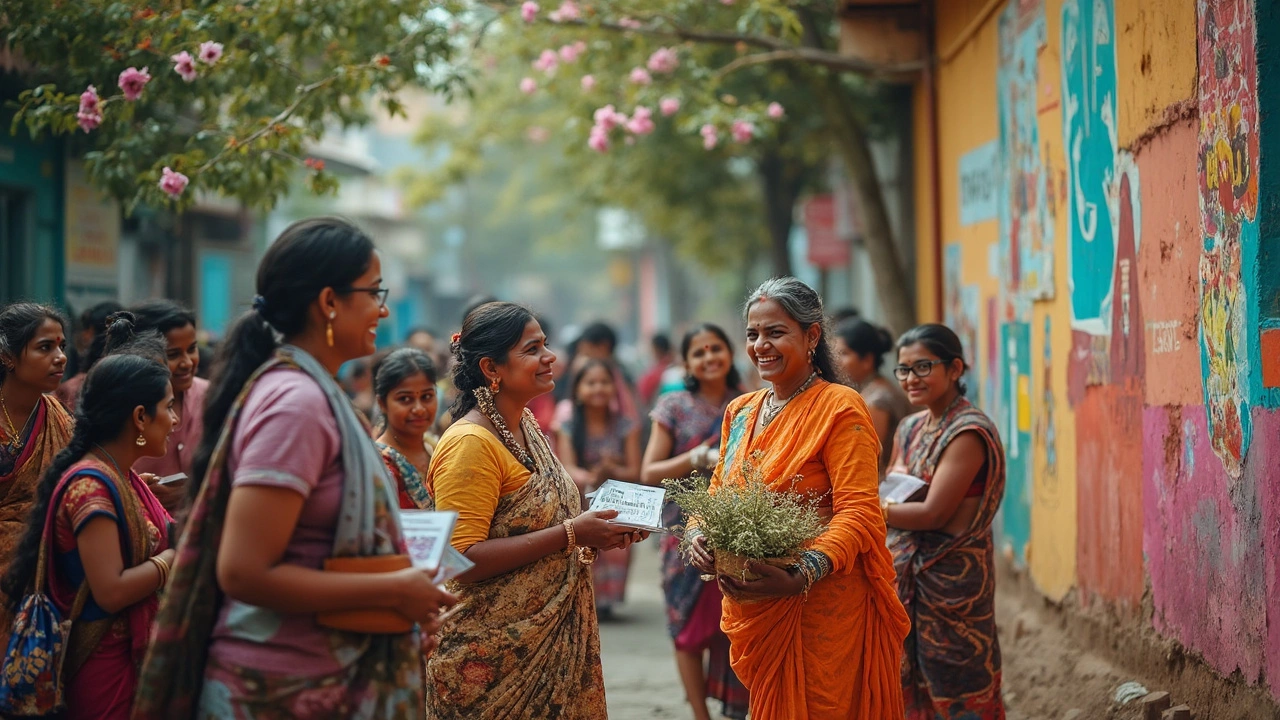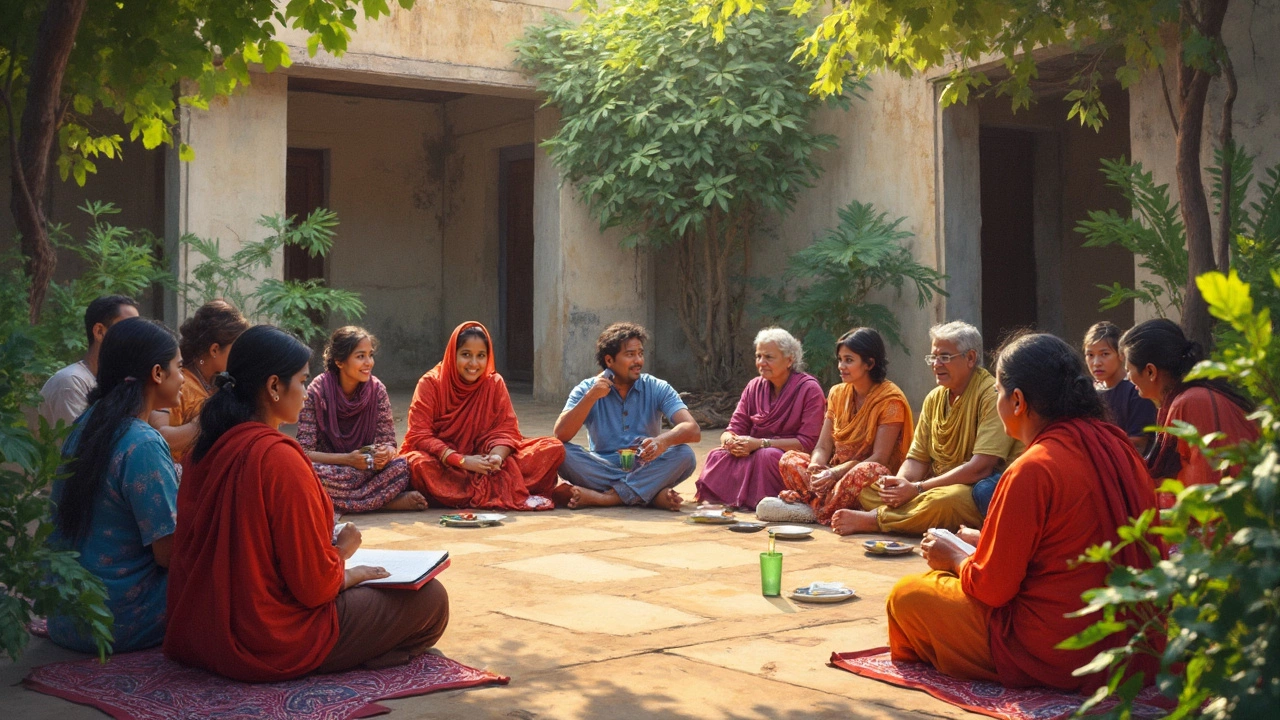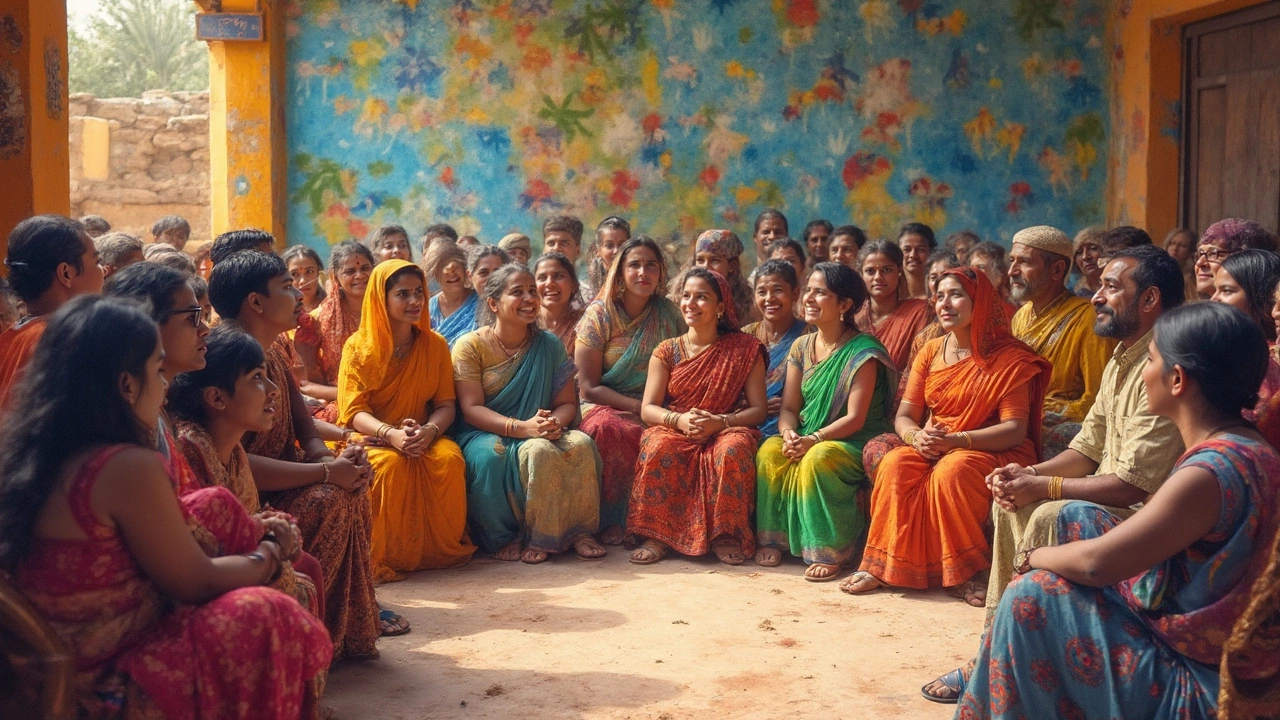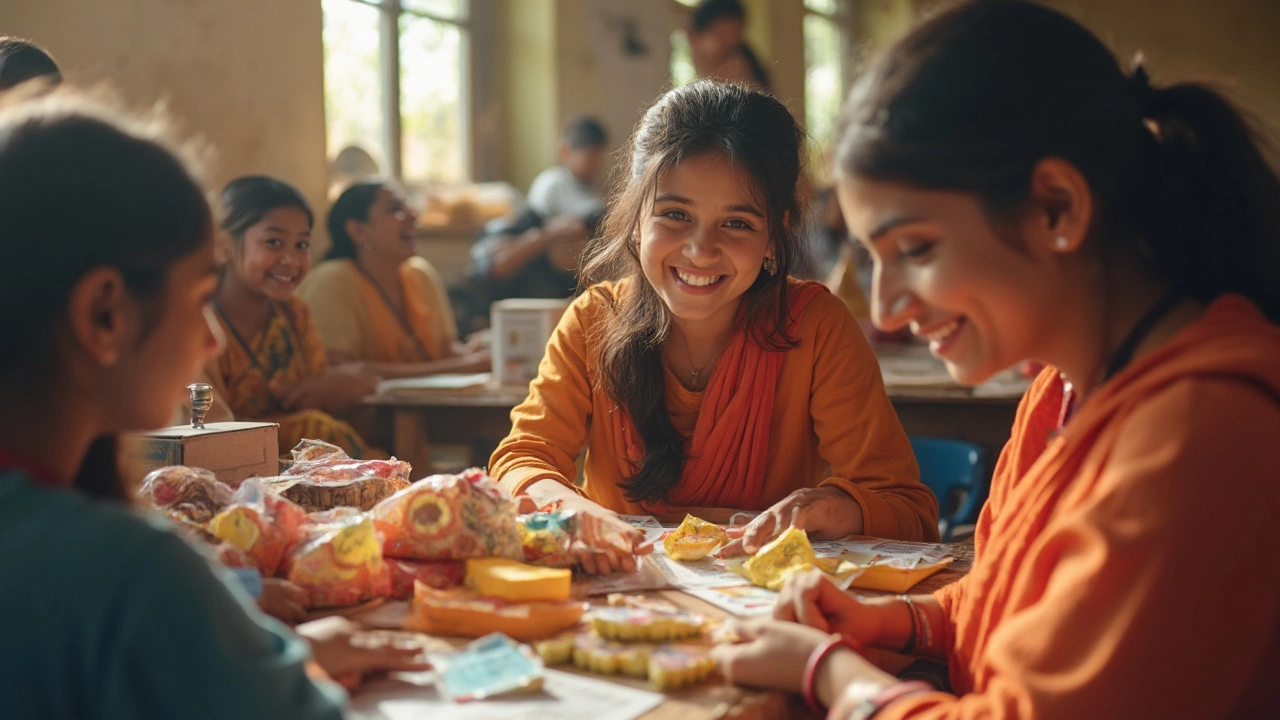Creating a community outreach program can seem daunting, but understanding the steps and priorities can make it achievable. It's all about identifying needs, assembling a passionate team, and creating a plan that has a real impact. This guide provides practical tips to structure your outreach efforts, engage volunteers, and measure success. Let's make a difference together in strengthening our local communities.

- Created by: Lydia Carmichael
- Completed on: 21 May 2025
- Categories: Community Support
Ever noticed how one neighbor helps another during tough times? That’s the heart of community outreach. It’s not just about handing out flyers or hosting events—it’s about showing up for people who need a hand, right in your own backyard. Community outreach happens when people or groups go out of their way to connect with others, especially those who might be left out, to offer real support or share resources.
So, what does that look like daily? Maybe it’s organizing food drives, starting a free after-school club, or checking in on the elderly down the street. It isn’t always glamorous, but it’s practical and real. Local outreach can even mean helping someone fill out forms or showing up for clean-up days at the park. The main idea is simple: don’t wait for others to act—small steps from everyday folks really start to add up.
- What Is Community Outreach?
- Why Community Outreach Works
- Types of Outreach Programs
- Tips for Getting Involved
- Real-Life Impact Stories
What Is Community Outreach?
If you ask ten different people to explain community outreach, you’ll get ten stories that all have one thing in common: helping people in ways that make life better for everyone. At its core, community outreach means stepping out of your own routine to connect with others in your area, usually to offer support, resources, or information. These connections are planned and have a clear purpose—think reaching those who might not otherwise ask for help or even know what’s available locally.
Community outreach isn’t limited to one kind of group. It can involve schools, churches, nonprofits, businesses, or even a handful of motivated neighbors who just want to fix something that’s not working. The secret sauce? It’s all about building trust with people who aren’t already on your list of contacts. Sometimes, that’s a quick one-off event. Other times, it turns into a long-lasting program.
When you hear stories about free health screenings in parking lots or food pantries popping up after a storm, that’s outreach in action. There’s often a focus on groups who might fall through the cracks—like families with low incomes, seniors, people new to the area, or folks struggling with a crisis.
Here are a few typical features of community outreach:
- It’s proactive. You don’t wait for someone to knock on your door—you go out and look for ways to help.
- It’s about solving real problems, from hunger to loneliness to education gaps.
- It builds bridges instead of walls, often connecting resources to people who need them most.
- It’s local, personal, and always about making a practical difference.
So, whether you’re lending a hand at a pop-up vaccine clinic or organizing your own block’s clean-up, you’re part of something bigger. That’s what makes outreach more than good intentions—it’s tangible action shared by a community.
Why Community Outreach Works
You might wonder if community outreach really changes anything. It actually does—sometimes way faster than people expect. When neighbors get involved, you see trust build up quickly. In a 2023 Pew Research Center study, almost 60% of people in active communities reported better mental wellbeing, compared to just 32% in less involved ones. So yes, giving back boosts emotional health, too—not just for the receiver, but the giver.
What really makes community outreach tick? It plugs gaps that government services miss. For example, food banks often reach families who wouldn’t get much help otherwise. There’s also the ripple effect: when just a few people join in, others follow. Kids who go to free homework clubs usually end up helping out themselves later, so you get this ongoing cycle of support.
- Local outreach means solutions fit the local needs perfectly, whether it’s tutoring or meal programs.
- Volunteer work builds leadership skills and confidence—a big win for teenagers and adults alike.
- Regular community projects have actually been shown to lower neighborhood crime rates, according to Department of Justice data.
Here’s a quick look at some real results from outreach programs, so it’s not all just theory:
| Program Type | Reported Benefit | Year |
|---|---|---|
| Food Assistance | 20% decrease in local hunger | 2022 |
| Homework Help | 15% boost in high school graduation rates | 2021 |
| Neighborhood Watch | 30% lower burglary incidents | 2023 |
Basically, outreach takes big problems, breaks them down, and lets regular people actually pitch in to solve them. The success isn’t magic—it’s because community members understand what their own area needs, so solutions stick.

Types of Outreach Programs
You might be surprised by how many ways there are to do community outreach. It’s not just about volunteers canvassing, though that’s definitely one route. Here are some common and proven types of outreach programs people jump into:
- Education Outreach: These programs offer tutoring, literacy help, and STEM workshops to students or adults who need a boost. Libraries and nonprofits often set up weekend reading clubs or homework hotlines.
- Health Outreach: Free clinics, flu shot pop-ups, and mobile dental vans fall into this category. One of the most successful efforts was the “Vaccines on Wheels” campaign during COVID-19, which brought vaccines right into high-need neighborhoods. In 2021, these mobile clinics helped increase vaccination rates in underserved areas by almost 20%.
- Food Security Programs: Food banks, soup kitchens, and produce deliveries keep families fed. Some schools even send home weekend meal packs for kids. The USDA reported that food pantries handed out over 6 billion pounds of food in 2023.
- Youth and Sports Programs: Community centers often set up free or low-cost sports leagues, mentoring groups, and camps. These programs keep kids off the streets and give them safe spaces to hang out.
- Environmental Outreach: From neighborhood cleanups to recycling drives and tree-planting, these programs rally folks to protect their local parks and water. Some groups partner directly with city governments to ramp up the impact.
Why do outreach programs work? They tap into what people actually need. As the director of National Community Foundation, Jen Torres, said,
“The best outreach isn’t just about giving. It’s about connecting face-to-face and really listening, so help goes where it’ll make the biggest difference.”
Here’s a quick look at what some of these programs look like in numbers:
| Type of Program | Average People Helped Annually (US, 2023) |
|---|---|
| Food Banks | 38 million |
| Mobile Health Clinics | 7 million |
| Youth Mentoring Programs | 4.5 million |
| Environmental Cleanups | 2 million |
It just goes to show—whatever your interest or skill, there’s a good fit out there. You just have to look around and see where you can jump in.
Tips for Getting Involved
Diving into community outreach doesn’t mean you have to reinvent the wheel or make a huge time commitment. Most folks start small—sometimes just an hour a week makes a difference. So where should you start? It helps to look around and spot real needs in your town or neighborhood.
- Volunteer Locally: Check out your nearest food bank, animal shelter, or school. These places almost always welcome extra hands. According to the Corporation for National and Community Service, about one in four Americans volunteer at least once a year.
- Use Your Skills: Good at organizing events? Know your way around social media? Groups need all types of talents—from coaching to web design or even just making coffee.
- Join Existing Efforts: Many outreach projects are ongoing. Local libraries, housing coalitions, and youth programs are straightforward places to start. Don’t know any? The United Way has a searchable database to match you with projects close by.
- Team Up: Bring a friend, or rally your coworkers. Group volunteering often leads to bigger impact (and it’s more fun, too).
- Stay Consistent: Outreach isn’t usually about grand gestures; it’s about showing up again and again. People start to trust and rely on you, which makes results stick around.
Want to know what really works? Mary Smith, director at a long-running food pantry, puts it simply:
"People sometimes forget, but the biggest help is just being there when you say you will. Reliability means more than any fancy donation."
Sometimes data helps people see the picture more clearly. Here’s a snapshot from the 2023 Volunteering in America report:
| Type of Outreach | % US Adults Involved (2023) |
|---|---|
| Food Support | 31% |
| Youth Mentoring | 18% |
| Environmental Cleanups | 23% |
| Community Events | 27% |
Look at what excites you most, and start there. Even if your schedule’s packed like mine (and trust me, between work and my cat Hazel, I get it), carving out a little time can actually be pretty doable—and rewarding.

Real-Life Impact Stories
It’s one thing to talk about community outreach, but seeing what it looks like in real life makes all the difference. In Houston, after Hurricane Harvey back in 2017, local sports clubs and food trucks jumped into action. They handed out over 500,000 free meals in a month. Residents still talk about how that food—hot and ready—kept whole neighborhoods going while waiting for help to arrive.
Another example: “Books and Breakfast” in Chicago. Volunteers set up tables in local parks before school and offered free books and healthy snacks. It’s way more than just food and reading material. It’s a safe spot for kids whose parents needed to be at work early, and sometimes the only meal some of those kids got before lunch. In their first year, they gave out over 10,000 books and served hundreds of breakfasts every week.
Here’s a snapshot of real numbers:
| Program | Location | Year Started | People Helped (per year) |
|---|---|---|---|
| Mobile Food Pantries | Los Angeles | 2015 | 30,000+ |
| Neighborhood Clean-Ups | Detroit | 2019 | 8,000+ |
| Books and Breakfast | Chicago | 2022 | 1,500+ |
| Post-Hurricane Meal Relief | Houston | 2017 | 500,000 (over one month) |
If you’re thinking of getting into outreach, you don’t need a big group or special training. Most of these projects started with regular people who noticed a gap and stepped in. The key is to connect—listen to what folks need, start small, and be consistent. Even dropping off a few extra canned goods at a pantry adds up when the whole community pitches in.
Community outreach brings people and organizations together to solve real problems, support those in need, and build connections that make neighborhoods better. This article shows how outreach really works, who gets involved, and how you can take part. You'll get practical tips, learn some surprising stats, and see how small actions pile up to make a big difference. Whether you're new to outreach or want fresh ideas, you're in the right place. Dive in to see what it takes to turn good intentions into real results.
Volunteering isn’t just about giving—there’s a ton you get back, too. This article breaks down five practical benefits of volunteering, covering everything from building real-world skills to beating loneliness. You'll get tips on finding the right volunteer gig and making the most out of every experience. If you’re curious about how lending a hand can help you grow or why it’s so satisfying, you’ll find the facts here. Get ready for insights, not just inspiration.


